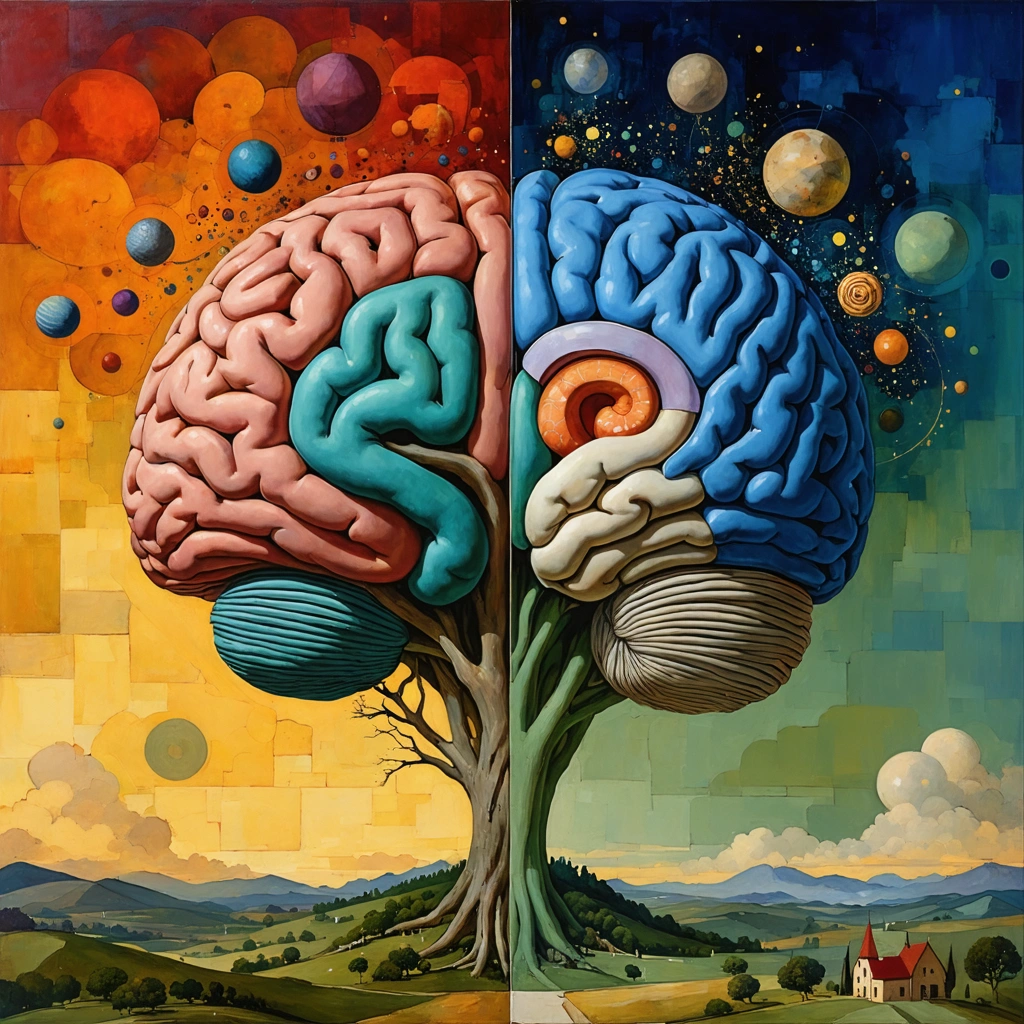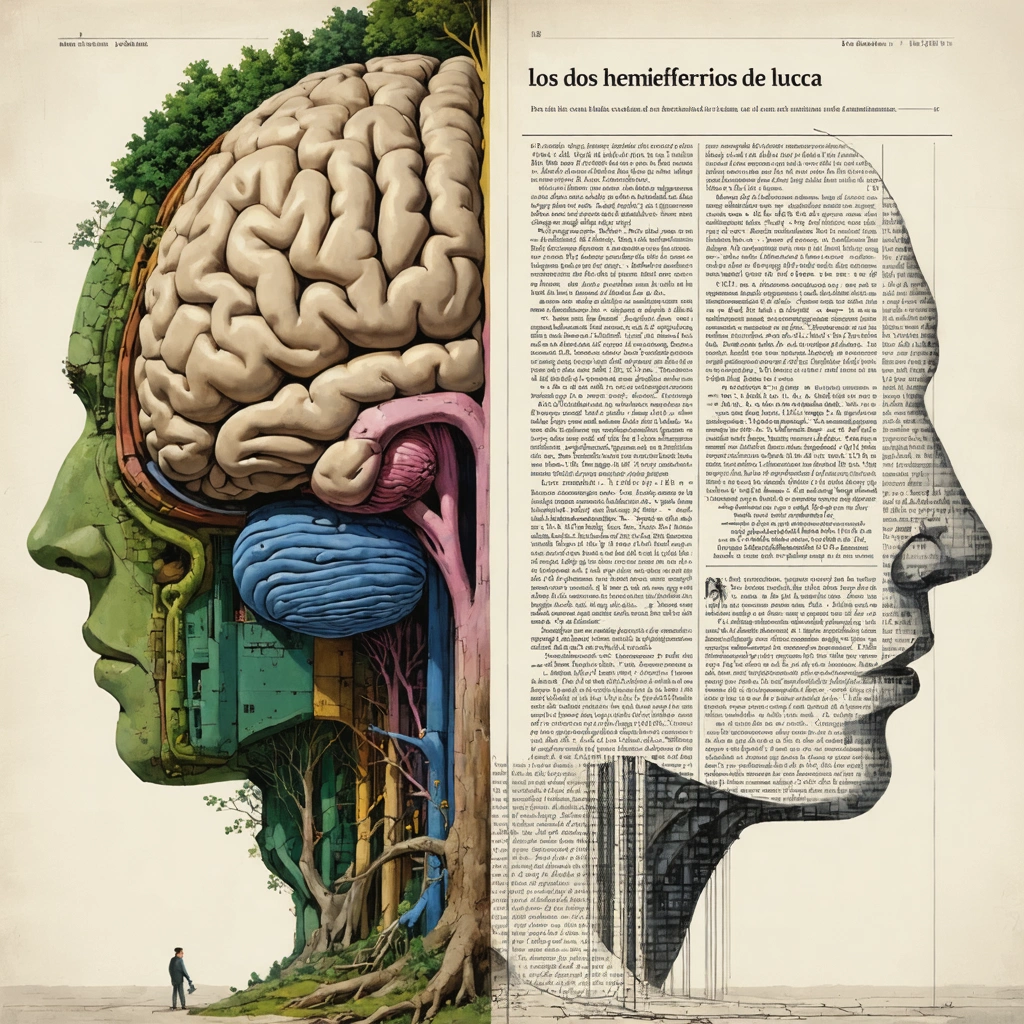
Imagine standing at the crossroads of science and storytelling, where the intricate architecture of the human brain merges with the rich tapestry of culture. This is precisely where Los Dos Hemisferios de Lucca takes us—a journey into the dual realms of the mind that shape not only how we think but how we narrate our very existence. But why do these two hemispheres matter in the grand scheme of cognitive narratives? And how do these brain narratives weave the fabric of cultural identity and personal experience? Let’s delve into the fascinating interplay between the left and right hemispheres of Lucca’s brain, uncovering the cognitive stories that define us.
Why Do We Struggle to Understand Our Own Minds?
We often assume that our thoughts are simple, linear sequences—a straightforward path from problem to solution. Yet anyone who’s wrestled with a complex decision or tried to articulate a feeling knows this isn’t the case. The human brain is a dynamic, multifaceted organ, and the stories it tells about itself are anything but simple. This complexity is especially evident when we look through the lens of Los Dos Hemisferios de Lucca, which highlights the distinct yet complementary functions of each side of the brain.
On one hand, the left hemisphere is often associated with logic, language, and analytical thinking. On the other, the right hemisphere embraces creativity, intuition, and emotional resonance. These dual modes give rise to cognitive stories that are both rational and poetic, structured yet fluid. But this division can also be a source of confusion and conflict—our minds are constantly negotiating between these two worlds, trying to create coherent narratives about who we are and how we relate to the world.
The Challenge of Reconciling Two Minds in One
Think of the brain as a pair of storytellers sitting side by side. One insists on facts, evidence, and clarity. The other prefers metaphor, ambiguity, and feeling. When these storytellers disagree, the narratives we produce can feel fragmented or incomplete. This internal tension echoes outward into our cultural frameworks—how communities interpret history, identity, and meaning.
- Why do some cultures emphasize rational discourse while others celebrate myth and symbolism?
- How do these differing emphases reflect the dominance of one hemisphere’s style over the other?
- Most importantly, can understanding Los Dos Hemisferios de Lucca help us bridge these divides?
These questions reveal a deeper curiosity about the nature of brain narratives—the stories our minds construct to make sense of reality. When we fail to appreciate the contributions of both hemispheres, our narratives grow lopsided, lacking the richness that comes from integrating logic with emotion, analysis with intuition.
Bridging the Divide: Embracing Both Hemispheres for Fuller Cognitive Narratives
Here’s where the exploration of Los Dos Hemisferios de Lucca becomes not just an academic exercise, but a transformative experience. By recognizing the duality within our own minds, we can cultivate a more balanced approach to thinking and storytelling. This means giving equal respect to the detailed, step-by-step reasoning of the left brain and the holistic, imaginative leaps of the right.
In practice, this balance manifests in powerful ways:
- Creative problem-solving: Combining analytical rigor with intuitive insight generates innovative solutions.
- Enhanced communication: Stories that resonate logically and emotionally connect more deeply with diverse audiences.
- Cultural empathy: Understanding different cognitive styles helps us appreciate varied worldviews and traditions.
By weaving together these strands, cognitive stories become richer and more compelling, reflecting the true complexity of human experience. Lucca’s brain, with its two hemispheres, serves as a metaphor and a map for this integrative journey.
What Lies Ahead in This Exploration?
Throughout this article, we will unpack the science behind the hemispheric differences illuminated by Los Dos Hemisferios de Lucca and explore their profound implications for culture, identity, and storytelling. We’ll examine how cognitive narratives shape not only individual perceptions but collective myths and histories. Along the way, you’ll discover practical insights for harnessing the full potential of your own brain’s dual nature.
Whether you’re a student of psychology, a lover of stories, or simply curious about how mind and culture intertwine, the journey through Lucca’s hemispheres promises to challenge your assumptions and expand your understanding. Ready to explore the fascinating dialogue between logic and imagination, fact and feeling? Let’s dive in.

Understanding Lucca’s Brain: Cognitive Narratives and Los Dos Hemisferios de Lucca
What is the concept of "Los Dos Hemisferios de Lucca" and how does it relate to brain narratives?
“Los dos hemisferios de Lucca” translates to “The Two Hemispheres of Lucca,” and it is a conceptual framework that explores the dualistic nature of the human brain through the lens of cognitive narratives. This concept reflects the classical understanding of the brain's two hemispheres — the left and the right — and how each hemisphere contributes uniquely to cognition, perception, and culture.
Specifically, the idea delves into how each hemisphere processes information differently, influencing the kinds of brain narratives or cognitive stories people create. The left hemisphere is often associated with logical reasoning, language, and analytical thinking, while the right hemisphere tends to handle creativity, intuition, and holistic thought. By examining these two hemispheres, Lucca’s Brain provides a richer understanding of how mind and culture intertwine through these cognitive stories.
Understanding los dos hemisferios de Lucca allows us to appreciate how individuals construct narratives about their experiences, blending analytical thought with emotional and cultural context. This duality forms the backbone of many cognitive stories that shape perception and identity.
How do brain narratives and cognitive stories influence cultural understanding?
Brain narratives and cognitive stories are the mental frameworks through which individuals interpret their world. These narratives are constructed using cognitive processes that involve memory, perception, language, and emotion — all functions distributed across the brain’s hemispheres.
When we speak of cognitive stories in relation to culture, we acknowledge that culture itself is a shared set of narratives. These narratives are shaped by collective experiences, values, and traditions, which are processed and perpetuated by the brain’s hemispheres working in tandem.
For example, the right hemisphere’s role in creativity and holistic thinking allows for the generation of symbolic and metaphorical stories that are central to cultural rituals and art. Meanwhile, the left hemisphere’s analytical capabilities enable the structuring of cultural knowledge into language, laws, and social rules.
Research in cognitive neuroscience supports this interplay. Studies show that storytelling activates multiple brain regions across both hemispheres, underpinning how narratives are essential for social bonding and transmitting cultural knowledge. This makes brain narratives crucial to the formation and evolution of culture.
Why is exploring the dual hemispheres important for understanding the mind and culture?
Exploring los dos hemisferios de Lucca is vital because it reveals the complementary functions that underlie human cognition and culture. The brain does not operate in isolated halves but rather through dynamic interactions between the two hemispheres, each contributing unique strengths.
- Integration of Logic and Emotion: Understanding how the left and right hemispheres collaborate helps explain how individuals make sense of experiences both logically and emotionally, resulting in richer, more nuanced cognitive stories.
- Enhanced Creativity and Problem-Solving: By recognizing the brain's dual processing modes, educators and psychologists can develop methods to stimulate both hemispheres, fostering creativity alongside critical thinking.
- Cultural Adaptation and Evolution: Cognitive narratives that arise from this duality allow cultures to adapt and evolve by integrating new information (left hemisphere) and preserving traditional, symbolic meaning (right hemisphere).
Thus, the study of los dos hemisferios de Lucca goes beyond neuroscience—it intersects psychology, anthropology, and cultural studies, providing a holistic view of the mind’s role in shaping human society.
How can understanding Lucca’s Brain and cognitive narratives impact education and communication?
Understanding the principles behind Lucca’s Brain and cognitive narratives offers practical benefits in education and communication by tailoring approaches that engage both hemispheres of the brain. This leads to more effective learning and clearer communication.
- Balanced Teaching Methods: Integrating analytical exercises with creative storytelling can stimulate both hemispheres, enhancing memory and comprehension.
- Improved Communication Strategies: Awareness of brain narratives allows communicators to craft messages that appeal to logic and emotion, increasing persuasion and empathy.
- Personalized Learning: Recognizing individual differences in hemispheric dominance helps educators design personalized curricula that cater to diverse cognitive styles.
For instance, a case study in bilingual education demonstrated that students who engaged in narrative-based learning involving both hemispheres showed improved language retention and cultural awareness compared to those taught through rote memorization alone.
What are some real-life examples or case studies illustrating the application of los dos hemisferios de Lucca in cognitive stories?
Several real-life examples illustrate how los dos hemisferios de Lucca manifest in cognitive stories across different fields:
- Art and Therapy: Art therapy leverages the right hemisphere’s creativity and the left hemisphere’s language centers to help individuals express trauma through cognitive stories, promoting healing.
- Marketing and Branding: Successful campaigns use brain narratives by combining logical product information (left hemisphere) with emotional storytelling (right hemisphere) to connect with consumers on multiple levels.
- Cross-Cultural Communication: Anthropologists use knowledge of cognitive stories and hemispheric functions to decode how different cultures construct meaning, improving intercultural dialogue and cooperation.
These examples highlight the practical significance of understanding brain hemispheres and cognitive narratives as tools for enhancing human interaction and cultural exchange.



